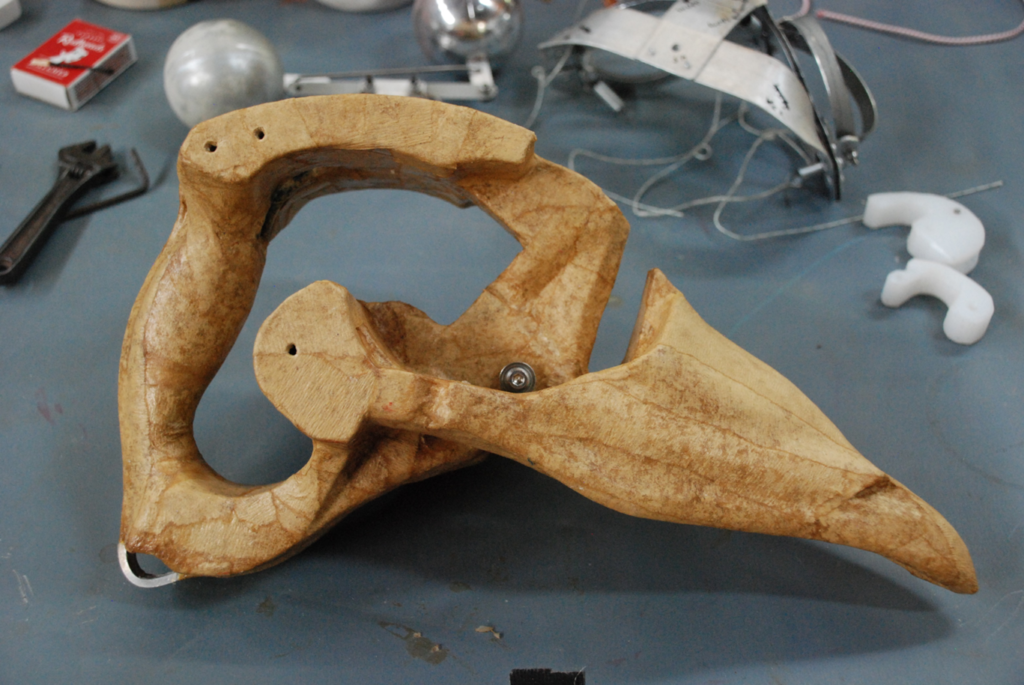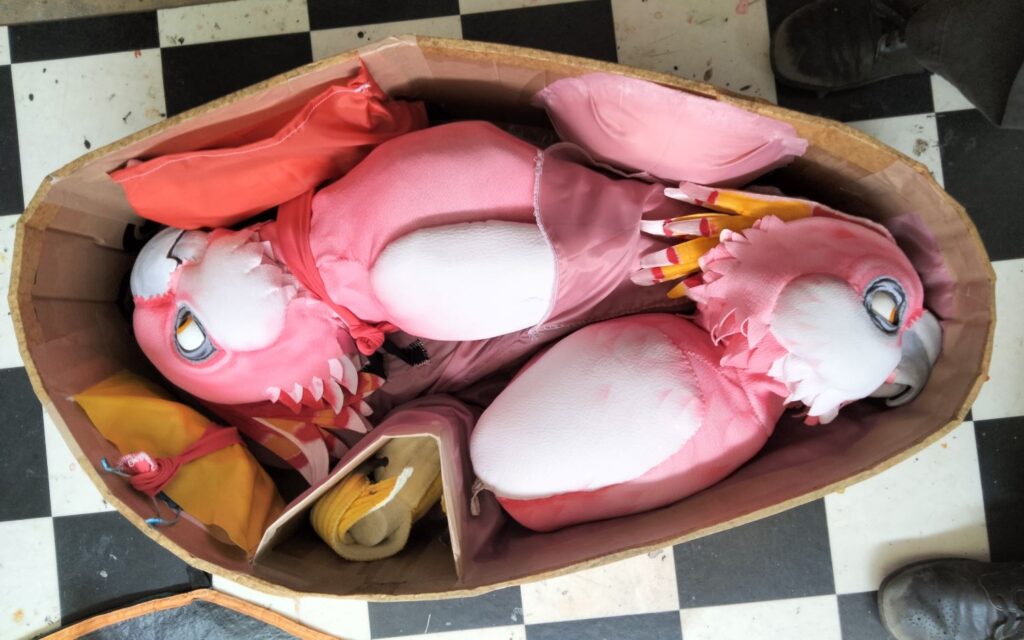I recently presented with the wonderful Dr Tanja Beer on Ecoscenography and Sustainable Puppetry Practice. Some interesting questions were raised by the network of artists and designers involved in the EU-based Impulse Project. One was about longevity: when proposing salvaged materials for theatre design, clients often question whether it will last.
There are several ways to address that doubt in puppet construction.
KNOW YOUR MATERIALS
There are no shortcuts for this. In material-informed design, the relationship you form with the material should include an understanding of its durability. If used outside, is it UV-stable? If bent 1000 times, will it still spring back? Does its colour stay fast or fade with washing? What you ask of the material should be well within its capacity – if it can support 10 kilos, ask it to hold only 5.

JOINING METHODS
How you join materials will affect breakage. Holes diminish strength, which means that thicker material must be used, which means there is more load and strain on the structure. Wherever possible, use joining methods which support and strengthen: lashing, binding, mache, stitching, glue. This runs counter to the traditional set construction advice to avoid glues and use screws for disassembly. But puppets tend to last for decades if made well, have little value as reused material, and are lighter when hardware is minimised.
LOOK AFTER IT
The travel case and instructions are just as important as the puppet itself. I always include time for these when quoting for a build. If your puppet is protected in transit and storage, and if it is used as intended, breakages will be less likely.

Tanja Beer’s ecoscenography approach addresses the question of longevity in different ways. It shifts the focus to ephemerality and ageing as a fascinating quality, to co-creation as the artwork, and to materials that can be returned to their original uses or to the earth as nutrients.
You can see our recorded talk here for Aura of Puppets’ Impulse Project EU, based in Finland (with apologies to Tanja for the mid-stream beginning).